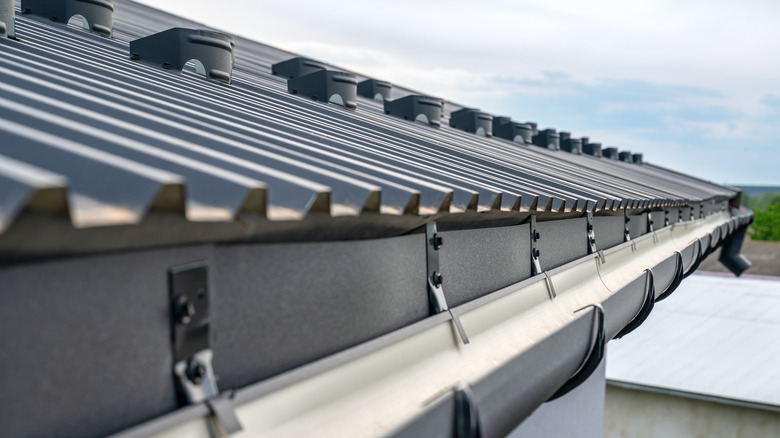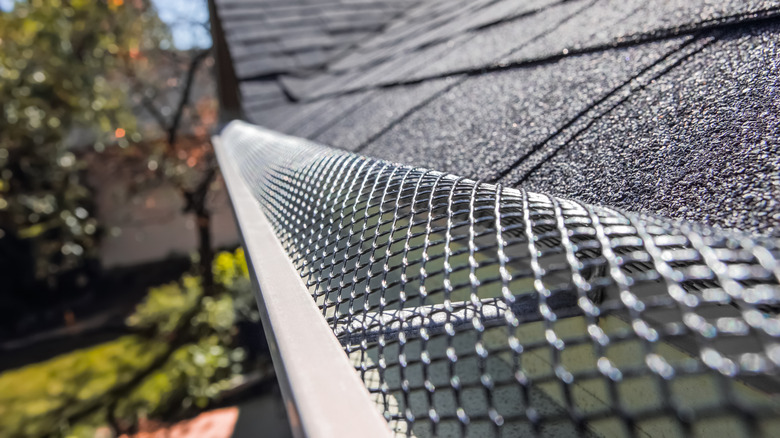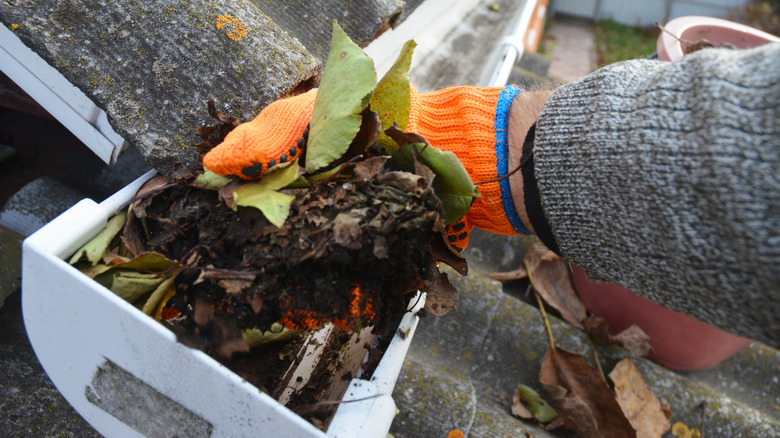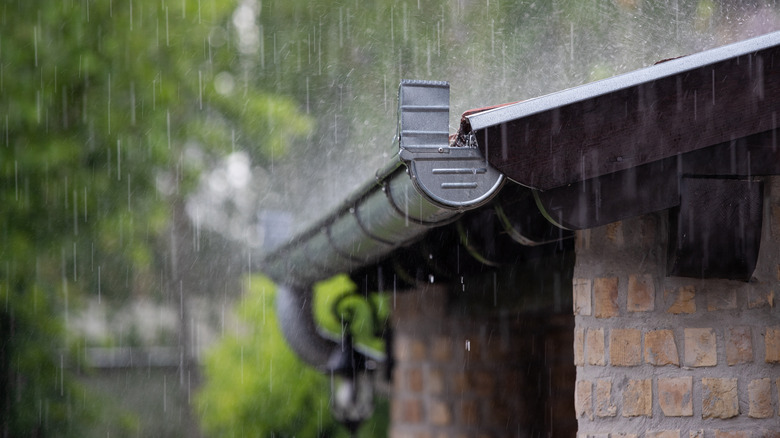3 Ways To Keep Debris Out Of Your Gutters So You Don't Have To Clean Them
If you live in an area that gets a lot of rain throughout the year, you know the importance of gutters. Gutters redirect rainwater away from your home so that it doesn't cause any water damage. This is crucial because overloaded gutters can leak into your house. Houses can also soak up moisture if the ground is soaked, and that water can get into the floors (via Long Home). Another danger is that moisture in the air can get trapped and that can cause mold.
According to My Gutter Pro, half-round, K-style, and box are the three main types of gutters, named for their shapes. They come in various materials, from aluminum to copper, and address different needs. Regardless of the type of gutter you have, it's important to know how to keep debris out of them. They will continue to function properly and you won't have to clean them that much!
Gutter screens
Gutter screens are probably the most common type of gutter guard. They are more popular than others because they are easy to DIY and are cost-effective, per Hatch Homes. There are various types, but metal and plastic are the most common. Gutter screens are easily found and don't need a lot of work to install. You can even cut them to fit your gutter, and some don't even need to be secured with screws!
One downside to using gutter screens is that their openings are usually big and won't be able to keep out every type of debris. The type that you get also has different needs. While gutter screens are affordable, consider that they might be affected by weather and other elements. Metal screens mostly need to be fastened with screws, while plastic screens are more susceptible to sun damage (via Hatch Homes). Keep your screens secured and be ready to clean out buildup if you get a lot of snow or high winds where you live, says Lowe's.
Foam inserts
Another type of gutter guard, foam inserts are sponges made from porous polyether or open-cell polyurethane foam that go directly into the gutter, per Angi. They keep everything out but water. Foam inserts are a good option for your gutters because they are one of the most affordable types of guard, costing about $2 per foot. They are also hidden from the outside and are easy to install.
Something to note about foam inserts is that they are difficult to clean and do not last very long. They will shrink and break down over time, and you will have to get new ones. They also don't work very well when there is too much rainfall and can retain roof oil, warns Angi. Because of how simple they are, there are a lot of foam options out there at really low price points, but you should seek out the quality ones so you can get a bit more efficiency and durability.
Surface tension gutter covers
Surface tension refers to the ability of liquids to resist and withstand an external force. Gutter covers use this principle so that rainwater sticks to them as it passes while debris falls to the ground. This is because liquids want to stay on a surface when they come into contact with it — even if they have to defy gravity (via Gutter Cover).
By taking this into account, surface tension gutter covers address a common problem among other types of gutter guards, which is that they have to make holes to let the rainwater in, explains Gutter Cover. These holes then allow some debris in and also cause the covers to require cleaning. Unlike the other types of gutter guards, this technology is built to withstand heavy rainfall and doesn't need to be cleaned or maintained. This is the best option for those that want minimal work when it comes to maintaining their gutters.



